Systems and practices for training grapes are crucial to developing robust and fruitful vineyards. Over many generations, these methods have developed to maximize grapevine growth, grape quality, and maintenance simplicity. This introduction will examine the foundations of grape training, dissecting difficult ideas into simple material.
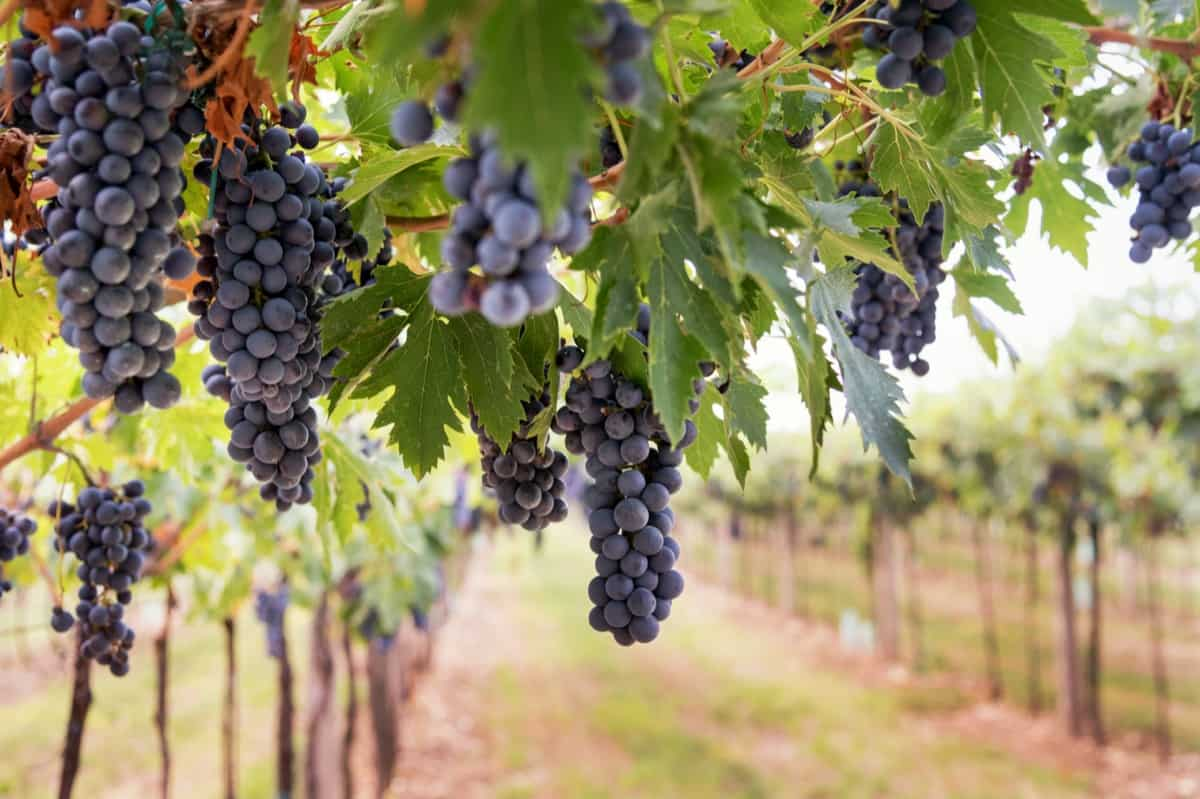
Carefully adjusting vines to provide optimal exposure to sunlight, sufficient airflow, and effective harvesting is known as grapevine training. Diverse techniques such as the Guyot system, Scott Henry, and Vertical Shoot Positioning (VSP) offer distinct advantages appropriate for varying grape varietals and cultivation environments. These systems impact disease prevention, grape ripening, and the sustainability of vineyards.
Grapes Training Systems and Methods
History and Evolution of Grape Training Systems
Grapevine training systems have been used in viticulture for centuries to manage canopy and balance foliage for photosynthesis without excessive shading. Regional traditions dictated the type of vine training used in a given area, codified into specific wine laws and regulations in the early 20th century. A study on the utilization of various training systems started in the 1960s.
As research continued into the 21st century, new vine training systems were developed to be adapted to the desired winemaking style, labor needs, and particular vineyard microclimate. The choice of pruning system depends on the natural elements of the vineyard and has cultural ramifications.
The head-trained, spur-pruned training system was the earliest in California, traditionally used in coastal vineyards, foothills, and interior valleys due to its affordability and ease of management. Research has shown that increasing head height increases yield as shoots grow longer and provide more leaf area. Grape culture is as old as civilization, with humans growing grapes as early as 6500 B.C.
Importance of Grape Training for Vineyard Management
For vineyard management to be effective and to ensure healthy vine growth and maximum fruit yield, grape training is essential. Optimizing air circulation and sunlight exposure—two essential elements for grape ripening and disease prevention—entails pruning the vine’s branches and canopy. Effective training improves the yield and quality of grapes.
In case you missed it: Top 20 Grape Varieties to Grow in India: List of Grape Varieties to Grow for High Profits
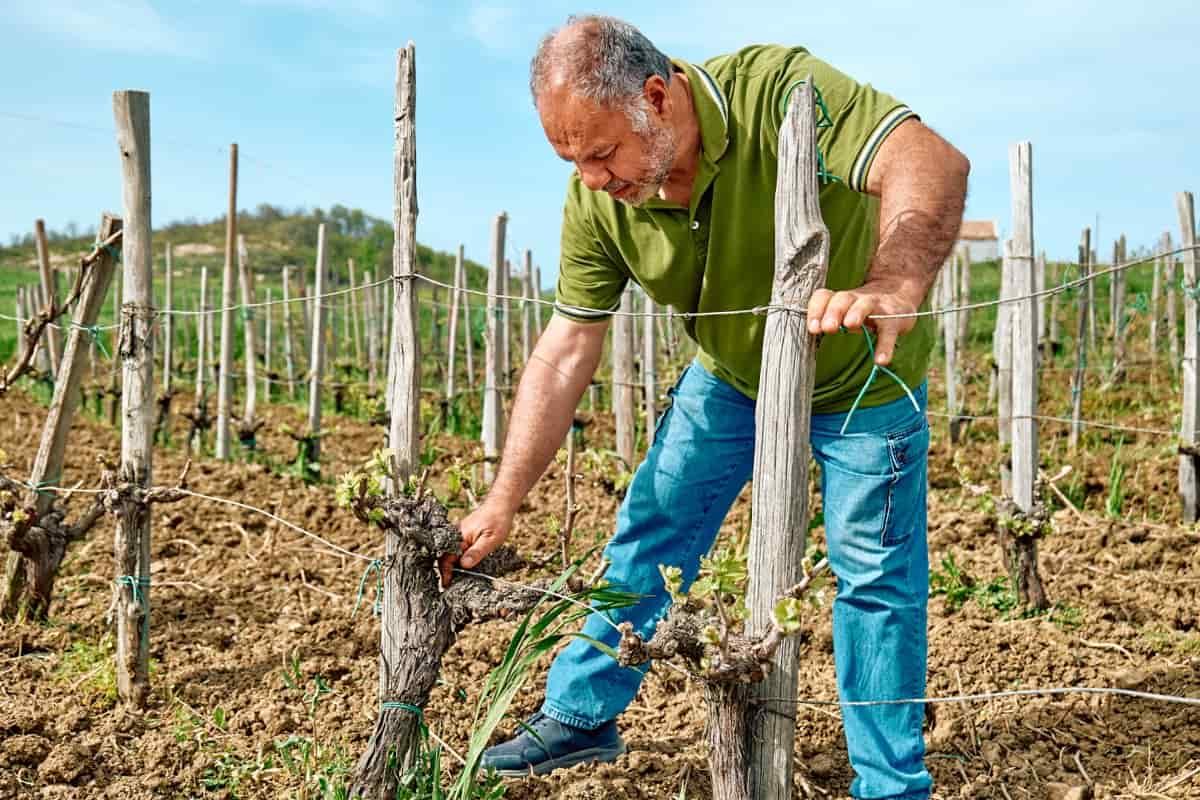
It also makes harvesting easier by making it easier to reach grape clusters and makes pruning easier. Diverse training systems, such as the Geneva Double Curtain and Vertical Shoot Positioning (VSP), provide adaptability to varying vineyard circumstances and grape varietals. Training also makes access to machines easier and enhances the appearance of vineyards. It is an essential technique for effective and sustainable grape farming.
Factors Influencing Grape Training System Selection
The choice of a grape training system depends on several important variables that affect vineyard management and fruit quality. For winemakers and vineyard owners, these elements are crucial:
- Climatic Conditions: A significant factor is the local climate. Pergola systems shade warmer regions, while Vertical Shoot Positioning (VSP) systems shield grapes from frost in colder climes.
- Grape Variety: The growth processes of many grape types are distinct. Although Muscat prefers the pergola system, Pinot Noir and other varieties do well with VSP.
- Disease Resistance: By enhancing air circulation, certain systems, such as the Geneva Double Curtain, lower the incidence of fungus-related illnesses.
- Labor and Equipment: The cost of the equipment and the availability of labor affect system selection. Vines with a lot of work may choose for less complex systems like the T-top.
- Considerations for Aesthetics: Aesthetics are important in vineyard design, and they can influence decisions like the Gobelet system that provide a scenic appearance.
- Winery Objectives: System selection is influenced by the intended wine style and quality. High-quality, low-yield wines require the Scott Henry system.
- Vineyard Size: While larger vineyards benefit from mechanization, smaller vineyards could use labor-intensive techniques.
- Local Regulations: Zoning and regional laws may restrict the alternatives available to you for your system.
Traditional Grape Training Systems
- Vineyard Basics: Traditional grape training systems organize grapevines within a vineyard to maximize sunlight exposure, airflow, and ease of maintenance.
- Types of Systems: Traditional systems include the Guyot, Cordon, and Pergola systems. Each has distinct characteristics and benefits.
- Guyot System: One or two long canes are trained horizontally along a wire with a short spur cane. It’s suitable for both red and white grape varieties.
- Cordon System: Vines are trained along horizontal wires with permanent arms (cordons) from which short spurs bearing fruit develop. It’s popular for its simplicity and suitability for mechanization.
- Pergola System: Often seen in warmer climates, grapevines grow overhead on an arbor-like structure. This system provides shade and can improve grape quality.
In case you missed it: Grape Vine Pruning, Defoliation, and Thinning for Great Yield
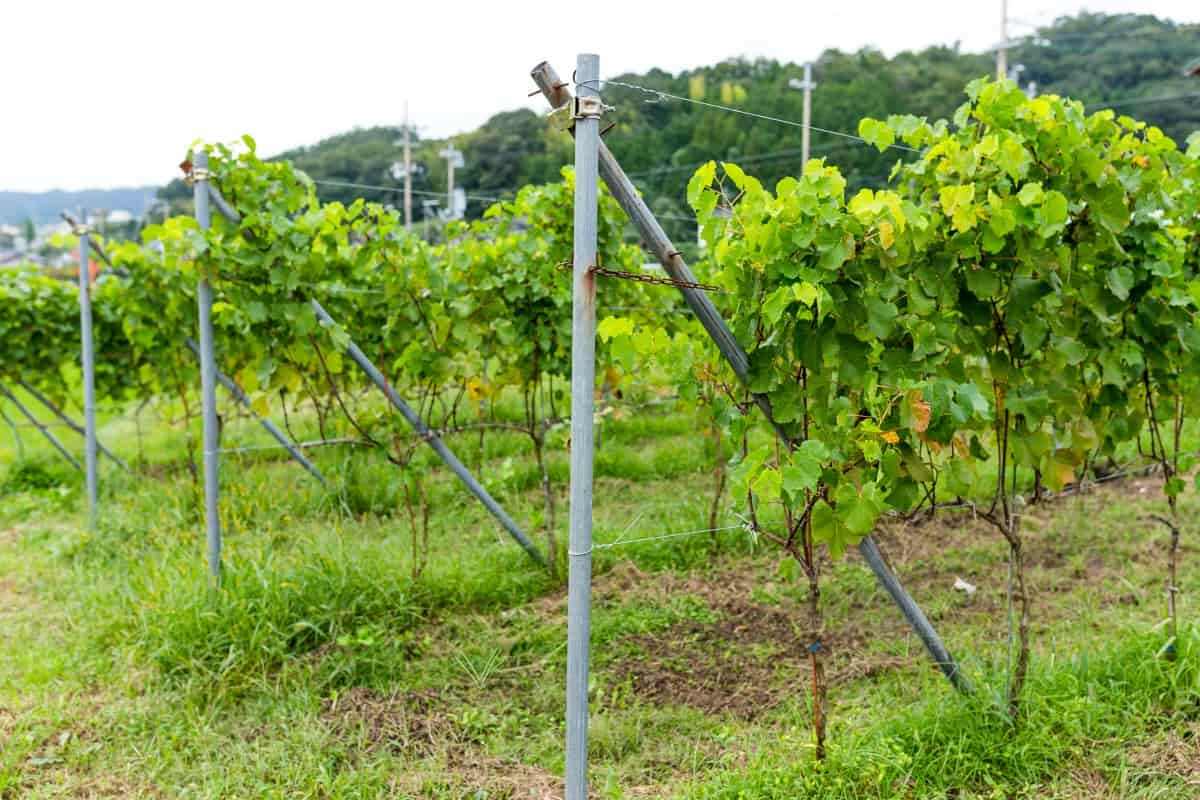
Modern Grape Training Systems
- Vertical Shoot Positioning (VSP): VSP involves training grapevines to grow vertically with shoots in a narrow canopy. This maximizes sun exposure and airflow, reducing disease risk.
- Smart Dyson: Developed by viticulturist Richard Smart, this system uses a split canopy to balance leaf and fruit growth, promoting uniform ripening.
- Scott Henry: In this system, vines are divided into two canopies, one high and one low, enhancing light distribution and fruit quality.
- Geneva Double Curtain (GDC): GDC divides the canopy into two curtains, promoting efficient photosynthesis and improving fruit ripening.
- High-Wire Cordon: A horizontal cordon system that increases canopy height for better light penetration and air circulation.
Cordon-based Grape Training Systems
- Benefits: They promote greater air circulation, sunlight exposure, and ease of maintenance, all leading to healthier vines.
- Types: The Geneva Double Curtain (GDC) and Vertical Shoot Positioning (VSP) are popular cordon-based systems.
- Row spacing: Generally, vines are placed 8–10 feet apart, with a 6–8 foot gap between each row.
- Pruning: To keep the cordon structure intact and regulate vine development, pruning is essential.
- Grape Varieties: Cabernet Sauvignon, Chardonnay, and Merlot are some grapes that can be grown using cordon systems.
- Harvesting: By streamlining the process, they simplify locating and selecting ripe grapes.
Guyot-based Grape Training Systems
- Pruning: Grapevine pruning aims to preserve a single main trunk with one or two “arms” or horizontal canes. Viti’s structure is, therefore, simplified.
- Cane Selection: To ensure premium grapes, canes are selected based on their health and capacity to bear fruit.
- Vines are placed regularly apart to optimize ventilation and sunshine exposure while lowering the danger of illness.
- Training: Shoots are trained along wires to promote equal development and simple maintenance access.
- Fruit placing: Depending on the objectives of the vineyard, Guyot systems can be modified for either high or low fruit placing.
- Advantages: Guyot systems facilitate effective harvesting, simple management, and high-quality grapes. Around the world, they are widely employed in creating fine wine.
In case you missed it: Mastering the Art of Grafting Techniques for Grape Vine
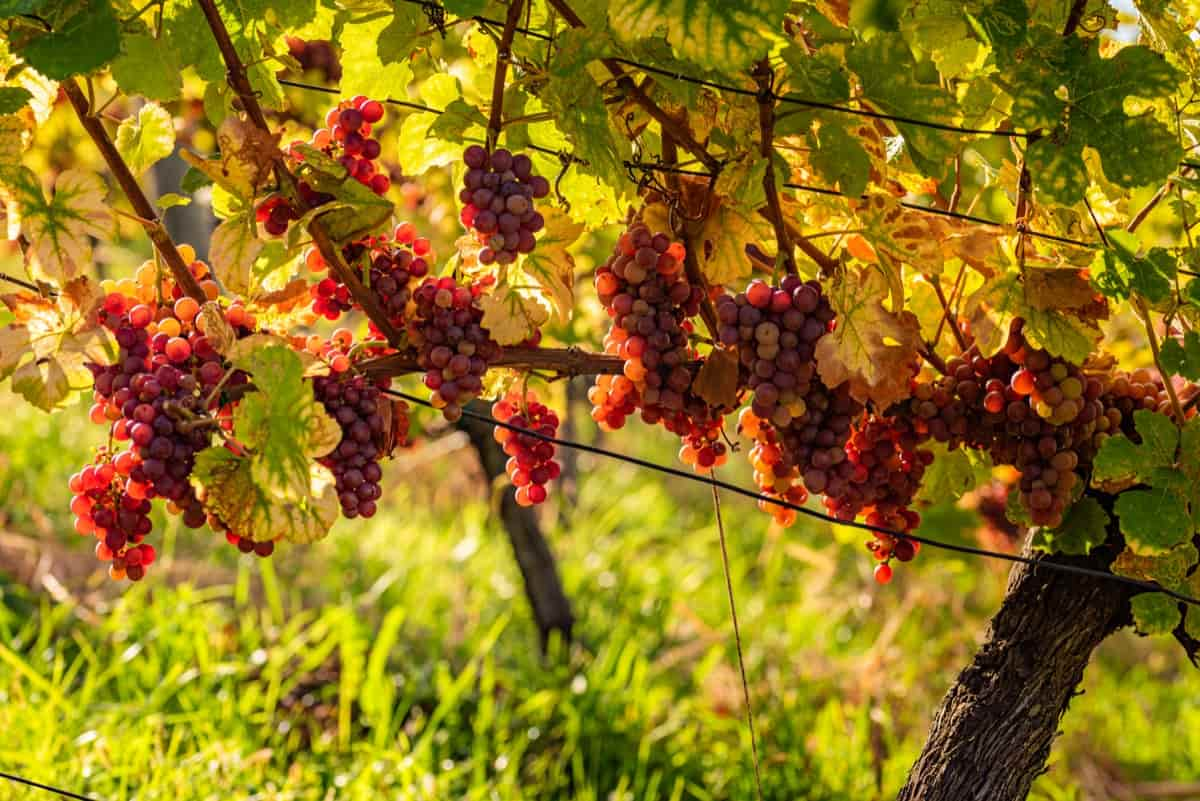
Kniffin System for Grape Training
- Purpose: The Kniffin System’s goal is to give grapevines a well-organized and functional framework that will allow for improved airflow and sunlight exposure, which will aid in the healthy growth and ripening of the grapes.
- Components: It is made of strong wooden stakes pushed into the ground along the rows of grapevines at regular intervals. Then, wires for a horizontal trellis are stretched between these poles.
- Training Technique: Grape canes or shoots are trained along trellis wires to encourage upward and outward growth. This makes maintenance easier and avoids crowding.
- Benefits: By lowering the danger of fungal infections through increased air circulation, this system helps manage diseases. It also opens up more opportunities for grape harvesting.
- Variation: The Kniffin System has several modifications that tailor its fundamental ideas to meet the needs of particular vineyards. These include the High-Cordon Kniffin and Geneva Double Curtain systems.
- Grape Varieties: European grape varieties can also be utilized with the Kniffin System, most frequently applied to American grape varieties like Concord and Niagara.
Geneva Double Curtain (GDC) System for Grape Training
- Purpose: The GDC system aims to boost grape yield, enhance grape quality, and simplify vineyard management.
- Structure: Grapevines are trained in a divided canopy pattern along two parallel wires stretched horizontally to improve light penetration.
- Advantages: GDC improves photosynthesis, lowers the danger of disease, and facilitates trimming and harvesting.
- Varietal Suitability: It can be used in various wine locations because of its adaptability to diverse grape varietals and growing circumstances.
- Pruning: Pruning is necessary to preserve the balance of the canopy and guarantee the best possible fruit exposure.
- Maintenance: The GDC system must be regularly monitored and adjusted to achieve the intended outcomes.
- Widespread Adoption: The GDC system has been widely adopted by vineyards across the globe due to its shown benefits for grape production.
Scott Henry System for Grape Training
- Double Curtain Trellis: This technique uses a divided canopy with one upper and one lower set of canes to improve grape ripening by regulating leaf density and providing shade.
- Enhanced Density: Scott Henry usually plants vines at a higher density per acre, which makes it possible to use the land more effectively and produce larger yields per vine.
- Better Disease Control: By lowering humidity and encouraging airflow, the system’s open canopy design reduces the danger of disease and lessens the need for chemical treatments.
- Improved Grape Quality: The system can improve fruit ripening, taste development, and overall grape quality by controlling canopy density and solar exposure.
- Flexibility: The Scott Henry System can be tailored to accommodate different grape types, weather patterns, and vineyard configurations.
Smart-Dyson System for Grape Training
- Automated Pruning: The system uses robotic arms fitted with fine-tuning instruments to prune grapevines with unmatched accuracy. Ensuring ideal canopy management, better air circulation, and sunshine exposure are encouraged.
- A.I. Monitoring: Integrated A.I. algorithms keep an eye on the health of vines, spotting illnesses or stress at an early stage. This lessens the demand for pesticides by enabling prompt treatments.
- Data analysis: The system gathers information about weather patterns, vine development, and soil conditions. A.I. processes this data to produce useful management insights for vineyards.
- Yield Optimization: The Smart-Dyson System optimizes grape yields while utilizing the fewest resources possible by customizing care for each vine.
- Sustainability: Less pesticide use, conserving water, and enhancing vine health all play a part in environmentally responsible grape farming.
In case you missed it: How to Grow Grapes Organically in Maharashtra: Step-By-Step Cultivation Process and Production Management
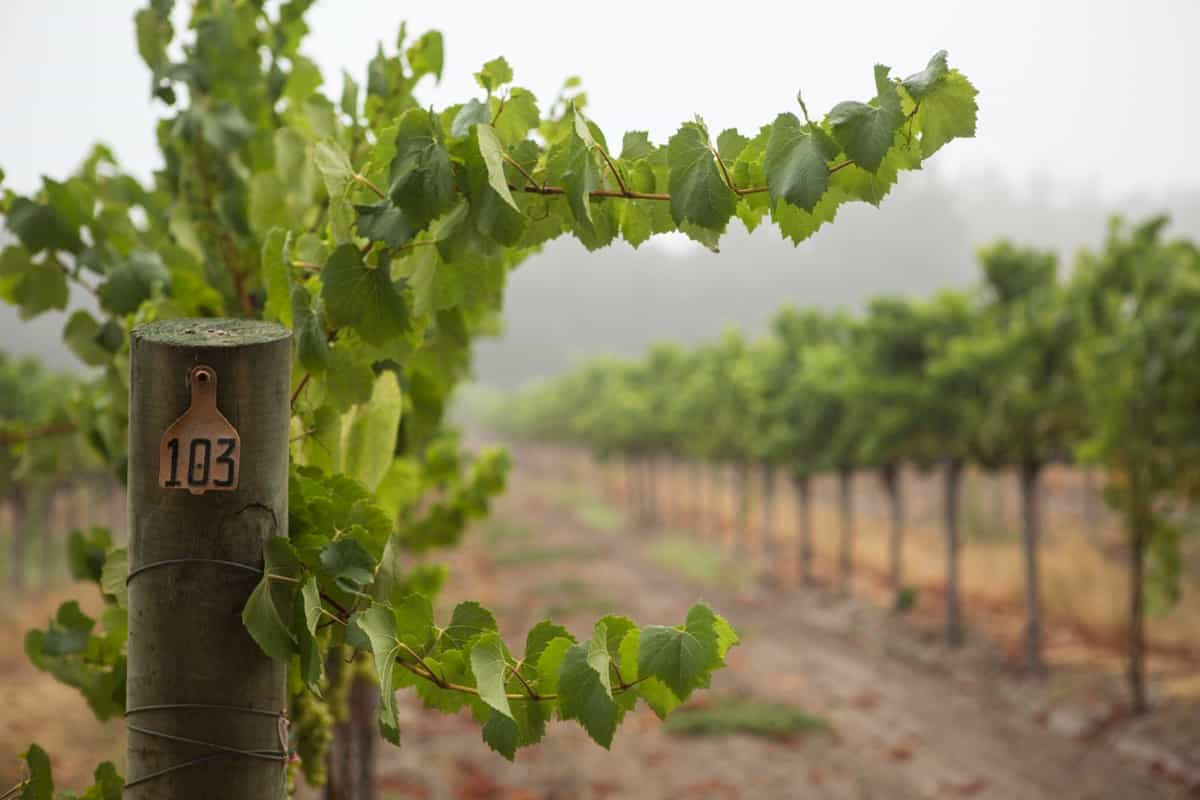
High-wire Cordon System for Grape Training
- Wire Placement: Install strong wires at varying heights, typically 5-6 feet above the ground, secured to sturdy posts.
- Vine Attachment: Prune grapevines to a single trunk and attach them to the wires using clips or ties.
- Benefits: This system encourages even ripening, minimizes disease risk, and simplifies grapevine maintenance.
- Spacing: Rows are spaced to accommodate equipment and promote sunlight penetration.
- Pruning: Regular pruning ensures a balanced canopy, facilitating grape quality and easy harvesting.
- Grapes Suited: High-wire cordons are ideal for wine grape varieties requiring controlled growth.
- Training Year-Round: Proper training and trellising are crucial for grape health and productivity.
- Harvest: Harvesting becomes more efficient with grapes at an accessible height.
Vertical Shoot Positioning (VSP) System for Grape Training
- Increased Sunlight Exposure: Variable Sunlight Protection (VSP) promotes consistent ripening and lowers disease pressure by distributing sunlight evenly across the grapevine canopy.
- Improved Airflow: It promotes improved air movement, reducing moisture content and shielding against fungal infections.
- Ease of Pruning: VSP makes canopy management and pruning simpler, which makes vine vigor control easier.
- Mechanization-Friendly: Excellent for mechanized tasks like leaf removal and harvesting, which lowers labor expenses.
- Variety Adaptability: VSP can accommodate different grape varietals and vineyard circumstances.
- Superior Fruit: In the end, VSP helps produce superior grapes, which are necessary to manufacture fine wine.
Comparative Analysis of Grape Training Systems
- Vertical Shoot Positioning (VSP): VSP is a popular grape training system where vines are trained vertically. It offers good sunlight exposure and air circulation, even ripening and disease control. However, it requires frequent pruning and maintenance.
- High-Wire Cordon (HWC): HWC involves training vines along a horizontal wire, reducing labor for pruning. It is efficient but can limit sunlight exposure in dense canopies, impacting grape quality.
- Geneva Double Curtain (GDC): GDC employs a split canopy system, enhancing sunlight penetration and reducing disease pressure. It’s labor-intensive initially but can improve grape quality over time.
- Smart-Dyson: This modern system combines VSP and GDC elements. It optimizes canopy management and sunlight exposure while minimizing labor, making it an attractive choice for many vineyards.
- Pergola: Pergola systems use overhead trellises, offering shade protection but can reduce sunlight exposure and affect grape ripening. They’re suitable for specific grape varieties and climates.
In case you missed it: How to Control Pests and Diseases in Grapes: Causes, Symptoms, Chemical, and Biological Management
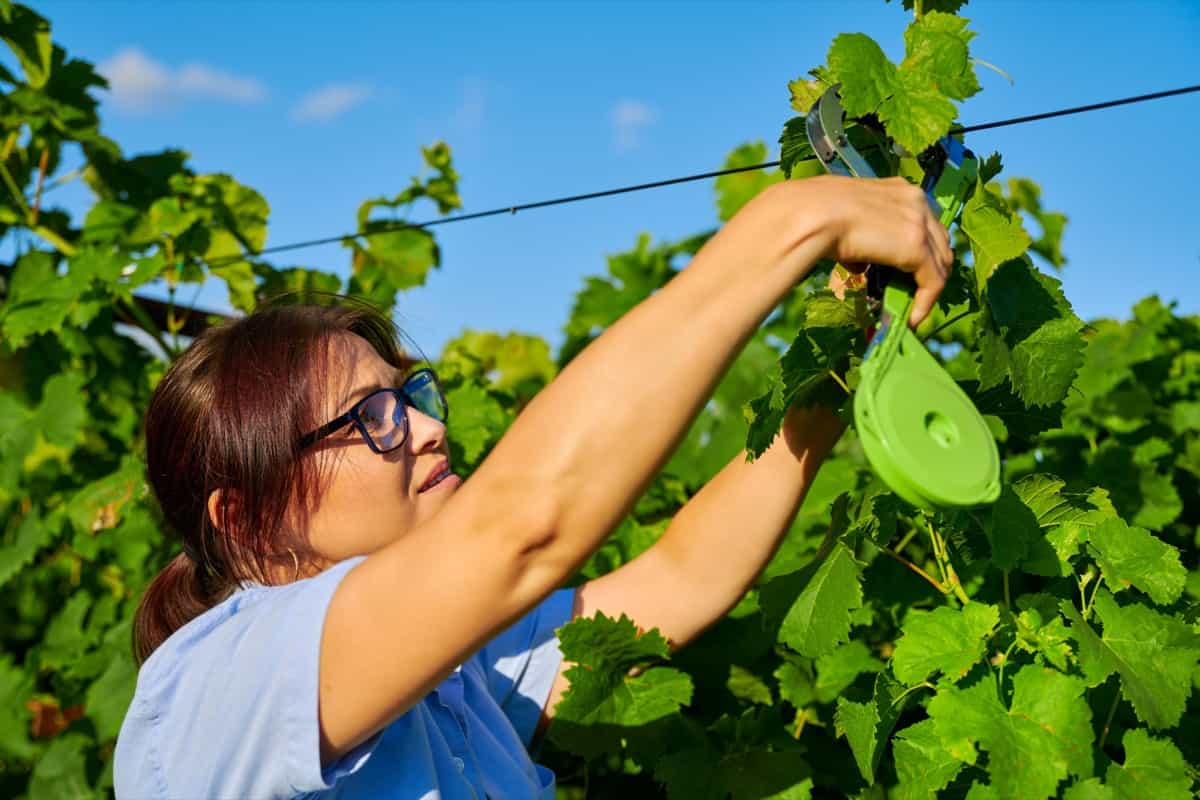
Conclusion
The Vertical Shoot Positioning (VSP) system provides optimal canopy management and sunlight exposure to produce high-quality fruit. On the other hand, the Geneva Double Curtain (GDC) system necessitates precise pruning yet offers effective mechanization alternatives. The decision should align with the vineyard’s resources and particular goals. Choosing the best training system is an important choice that affects grape yield, quality, and labor needs.
- Types of Pesticides Used in Agriculture: A Beginner’s Guide
- Economical Aquaculture: A Guide to Low-Budget Fish Farming
- 15 Common Planting Errors That Can Doom Your Fruit Trees
- How to Make Houseplants Bushy: Effective Tips and Ideas
- Innovative Strategies for Boosting Coconut Pollination and Yield
- Pollination Strategies for Maximum Pumpkin Yield
- The Complete Guide to Chicken Fattening: Strategies for Maximum Growth
- Natural Solutions for Tulip Problems: 100% Effective Remedies for Leaf and Bulb-Related Issues
- Revolutionizing Citrus Preservation: Towards a Healthier, Greener Future
- Natural Solutions for Peony Leaf and Flower Problems: 100% Effective Remedies
- Maximizing Profits with Avocado Contract Farming in India: A Comprehensive Guide
- Natural Solutions for Hydrangea Problems: 100% Effective Remedies for Leaf and Flowers
- The Ultimate Guide to Choosing the Perfect Foliage Friend: Bringing Life Indoors
- From Sunlight to Sustainability: 15 Ways to Use Solar Technology in Agriculture
- The Ultimate Guide to Dong Tao Chicken: Exploring from History to Raising
- The Eco-Friendly Makeover: How to Convert Your Unused Swimming Pool into a Fish Pond
- Mastering the Art of Delaware Chicken Farming: Essentials for Healthy Backyard Flocks
- 20 Best Homemade Fertilizers for Money Plant: DIY Recipes and Application Methods
- How to Craft a Comprehensive Free-Range Chicken Farming Business Plan
- Brighten Your Flock: Raising Easter Egger Chickens for Beauty and Bounty
- How to Optimize Your Poultry Egg Farm Business Plan with These Strategies
- Subsidy for Spirulina Cultivation: How Indian Government Schemes Encouraging Spirulina Farmers
- Ultimate Guide to Raising Dominique Chickens: Breeding, Feeding, Egg-Production, and Care
- Mastering the Art of Raising Jersey Giant Chickens: Care, Feeding, and More
- Ultimate Guide to Raising Legbar Chickens: Breeding, Farming Practices, Diet, Egg-Production
- How to Raise Welsummer Chickens: A Comprehensive Guide for Beginners
- How to Protect Indoor Plants in Winter: A Comprehensive Guide
- Ultimate Guide to Grow Bag Gardening: Tips, Tricks, and Planting Ideas for Urban Gardeners
- Guide to Lotus Cultivation: How to Propagate, Plant, Grow, Care, Cost, and Profit
- Agriculture Drone Subsidy Scheme: Government Kisan Subsidy, License, and How to Apply Online
- Ultimate Guide to Raising Araucana Chickens: Breed Profile, Farming Economics, Diet, and Care
- Bringing Hydroponics to Classroom: Importance, Benefits of Learning for School Students
- Ultimate Guide to Raising Polish Chickens: Breed Profile, Farming Economics, Diet, and Care
- Ultimate Guide to Raising Australorp Chickens: Profile, Farming Economics, Egg Production, Diet, and Care
- Silkie Chicken Farming: Raising Practices, Varieties, Egg Production, Diet, and Care
- Sussex Chicken Farming: Raising Practices, Varieties, Egg Production, Diet and Care